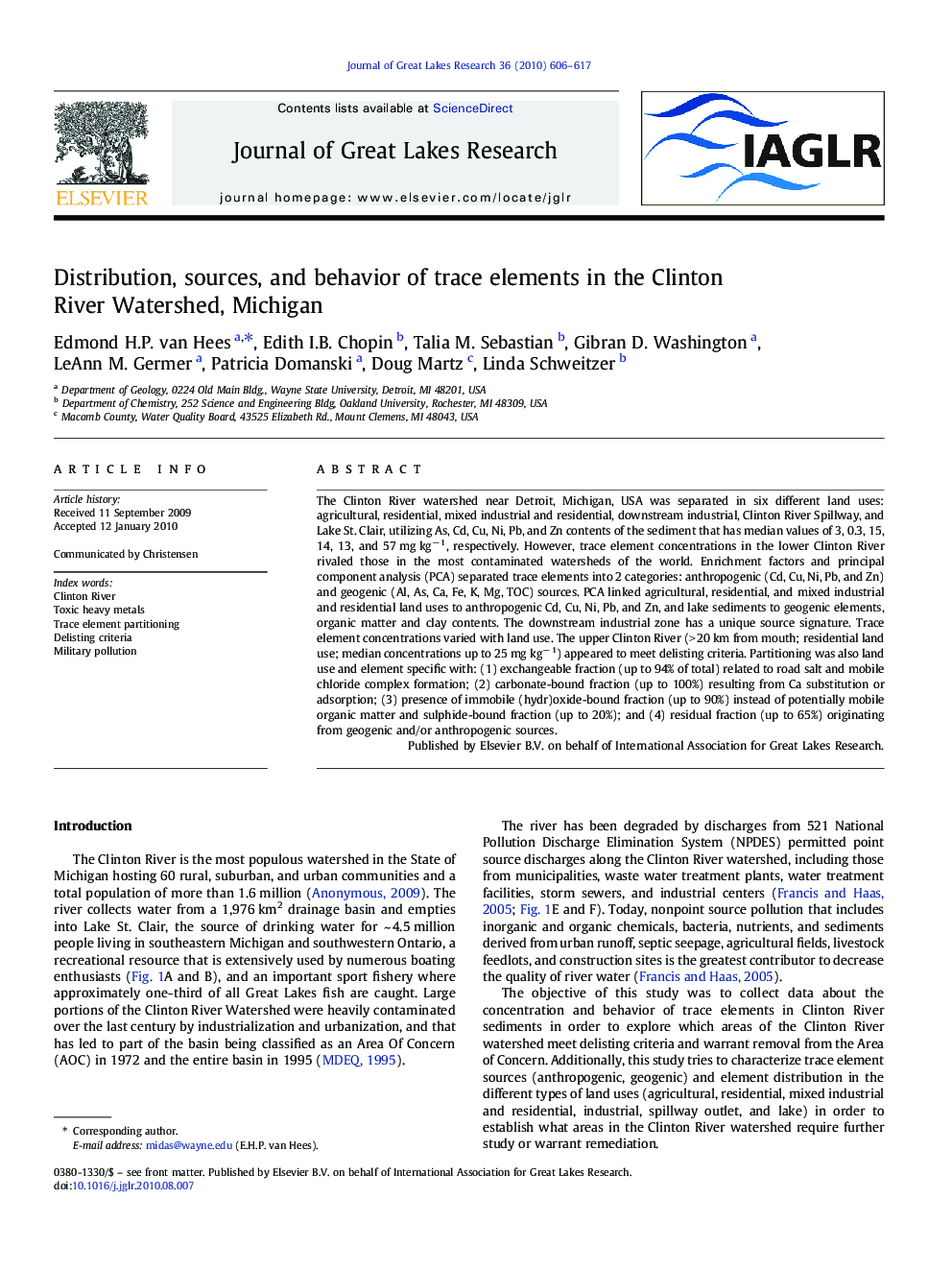| Article ID | Journal | Published Year | Pages | File Type |
|---|---|---|---|---|
| 4398967 | Journal of Great Lakes Research | 2010 | 12 Pages |
Abstract
The Clinton River watershed near Detroit, Michigan, USA was separated in six different land uses: agricultural, residential, mixed industrial and residential, downstream industrial, Clinton River Spillway, and Lake St. Clair, utilizing As, Cd, Cu, Ni, Pb, and Zn contents of the sediment that has median values of 3, 0.3, 15, 14, 13, and 57 mg kgâ 1, respectively. However, trace element concentrations in the lower Clinton River rivaled those in the most contaminated watersheds of the world. Enrichment factors and principal component analysis (PCA) separated trace elements into 2 categories: anthropogenic (Cd, Cu, Ni, Pb, and Zn) and geogenic (Al, As, Ca, Fe, K, Mg, TOC) sources. PCA linked agricultural, residential, and mixed industrial and residential land uses to anthropogenic Cd, Cu, Ni, Pb, and Zn, and lake sediments to geogenic elements, organic matter and clay contents. The downstream industrial zone has a unique source signature. Trace element concentrations varied with land use. The upper Clinton River (> 20 km from mouth; residential land use; median concentrations up to 25 mg kgâ 1) appeared to meet delisting criteria. Partitioning was also land use and element specific with: (1) exchangeable fraction (up to 94% of total) related to road salt and mobile chloride complex formation; (2) carbonate-bound fraction (up to 100%) resulting from Ca substitution or adsorption; (3) presence of immobile (hydr)oxide-bound fraction (up to 90%) instead of potentially mobile organic matter and sulphide-bound fraction (up to 20%); and (4) residual fraction (up to 65%) originating from geogenic and/or anthropogenic sources.
Related Topics
Physical Sciences and Engineering
Earth and Planetary Sciences
Earth and Planetary Sciences (General)
Authors
Edmond H.P. van Hees, Edith I.B. Chopin, Talia M. Sebastian, Gibran D. Washington, LeAnn M. Germer, Patricia Domanski, Doug Martz, Linda Schweitzer,
